Eye Drop Selection Quiz
Step 1: Severity of Inflammation
Step 2: Patient Risk Profile
Step 3: Duration of Treatment
Recommended Treatment Plan:
Pred Forte is a potent corticosteroid eye drop containing 1% prednisolone acetate, widely prescribed for post‑surgical inflammation, uveitis and allergic conjunctivitis. Its anti‑inflammatory action works by suppressing the release of prostaglandins and cytokines in ocular tissues, quickly reducing redness, swelling and pain.
How Pred Forte Works and What Makes It Different
Prednisolone, the active molecule in Pred Forte, belongs to the corticosteroid family of drugs that mimic the body’s own cortisol. By binding to intracellular glucocorticoid receptors, it alters gene transcription, decreasing inflammatory mediators. Compared with older steroids like hydrocortisone, prednisolone is roughly 4‑times more potent, meaning fewer drops are needed for the same effect.
Key Attributes of Pred Forte
- Potency: high (approximately 4× hydrocortisone)
- Typical dosage: 1‑2 drops per eye, 4‑6 times daily for the first week, then taper
- Formulation: preservative‑free, isotonic solution designed for sensitive eyes
- Onset of action: relief often within 12‑24 hours
When to Use Pred Forte
It’s the go‑to choice for:
- Post‑operative inflammation after cataract or laser surgery
- Uveitis (both anterior and intermediate)
- Severe allergic conjunctivitis not responding to antihistamines
Because of its strength, clinicians usually reserve it for moderate‑to‑severe cases and taper quickly to avoid complications.
Safety Concerns: Intraocular Pressure (IOP) Rise
The most clinically relevant risk of any steroid eye drop is an elevation in intraocular pressure that can lead to glaucoma if unchecked. Studies in the British National Formulary report that up to 20% of steroid‑responsive patients develop a measurable IOP rise after two weeks of daily use. Regular monitoring (baseline, 1‑week, and 4‑week checks) is essential, especially for diabetics, children and a history of glaucoma.
Alternative Topical Steroids
If you need a steroid but want a lower IOP risk, several alternatives exist:
- Loteprednol etabonate - a soft‑steroid with a rapid metabolic breakdown, reducing IOP spikes in most patients.
- Fluorometholone - milder than prednisolone, often used for chronic allergic conditions.
- Dexamethasone - very potent, but carries a higher IOP risk; typically reserved for short‑term bursts.
Non‑Steroid Options
For patients who cannot tolerate steroids, non‑steroidal anti‑inflammatory drug (NSAID) eye drops such as ketorolac or nepafenac provide anti‑inflammatory relief without raising IOP. They are less effective for severe uveitis but work well for mild post‑operative irritation.

Side‑by‑Side Comparison
| Drug | Potency (relative to hydrocortisone) | Typical Dose (drops/day) | Typical Therapy Length | IOP Rise Risk |
|---|---|---|---|---|
| Pred Forte | ~4× | 4‑6 | 1‑4 weeks, taper | Medium‑High |
| Loteprednol | ~2× | 4‑6 | 1‑2 weeks | Low |
| Fluorometholone | ~1.5× | 4‑6 | 2‑4 weeks | Low‑Medium |
| Dexamethasone | ~5× | 4‑6 | ≤1 week | High |
| Ketorolac (NSAID) | Non‑steroid | 3‑4 | 1‑2 weeks | None |
Choosing the Right Eye Drop for You
Decision‑making hinges on three factors:
- Severity of inflammation: Moderate‑to‑severe cases usually need a high‑potency steroid like Pred Forte or dexamethasone.
- Risk profile: Patients with a history of glaucoma, steroid‑responsive IOP rise, or diabetes benefit from softer steroids (loteprednol, fluorometholone) or NSAIDs.
- Duration of treatment: Short bursts (post‑laser) can tolerate stronger agents; chronic conditions demand milder, better‑tolerated options.
Discuss these points with your ophthalmologist; they’ll tailor a regimen that balances efficacy with safety.
Practical Tips for Using Eye Drops Effectively
- Wash hands thoroughly before each dose.
- Pull the lower eyelid down gently and drop the prescribed number without touching the tip to the eye.
- Close the eye lightly for 1-2 minutes; apply gentle pressure to the inner corner to reduce systemic absorption.
- If you’re on multiple drops, wait at least 5 minutes between each to avoid wash‑out.
- Store Pred Forte refrigerated after opening, discarding after 30 days.
Monitoring and Follow‑Up
After the initial prescription, schedule IOP checks at:
- Baseline (before starting)
- 1week (early rise)
- 4weeks (peak effect)
If IOP spikes >22mmHg, either taper the steroid faster, switch to a softer alternative, or add a pressure‑lowering eye drop (e.g., timolol).
When Pred Forte Might Not Be the Best Choice
Consider alternatives in these scenarios:
- Children under 6: Higher susceptibility to steroid‑induced cataract formation.
- Contact‑lens wearers: Steroid‑laden solutions can deposit on lenses, increasing infection risk.
- Pregnant or breastfeeding women: Systemic absorption, though minimal, warrants a softer steroid or NSAID.
In each case, a gentler agent like loteprednol or a non‑steroidal option provides adequate control with fewer systemic concerns.
Bottom Line: The Role of Pred Forte alternatives
Pred Forte remains a powerhouse for rapid, high‑potency inflammation control, but it isn’t a one‑size‑fits‑all. Knowing when to switch to loteprednol, fluorometholone, dexamethasone, or an NSAID eye drop can spare patients from unnecessary pressure spikes, cataract formation, and systemic exposure. The key is a clear assessment of inflammation severity, individual risk factors, and a disciplined monitoring plan.
Frequently Asked Questions
How quickly does Pred Forte start working?
Patients usually notice reduced redness and pain within 12‑24 hours, with maximum effect by day 3‑4 of regular dosing.
Can I use Pred Forte if I wear contact lenses?
It’s safest to remove lenses before each dose and wait at least 15 minutes after the last drop before reinserting. Some clinicians prefer a softer steroid to minimise lens deposits.
What is the biggest risk of long‑term Pred Forte use?
Prolonged exposure can raise intraocular pressure, potentially leading to steroid‑induced glaucoma, and increase the chance of posterior sub‑capsular cataract formation.
Is loteprednol safer for glaucoma patients?
Yes. Loteprednol has a rapid metabolic breakdown, so IOP spikes are reported in less than 5% of users, making it a preferred choice for steroid‑responsive individuals.
When should I switch from a steroid to an NSAID eye drop?
If inflammation is mild, IOP begins to rise, or you need to continue treatment beyond two weeks, an NSAID like ketorolac can maintain anti‑inflammatory control without steroid‑related pressure changes.
How often should intraocular pressure be checked while on Pred Forte?
Baseline, then at one week and four weeks after starting therapy. Additional checks are needed if you have a prior glaucoma diagnosis or notice visual changes.
Can I use Pred Forte during pregnancy?
Data are limited, but systemic absorption is low. Most clinicians prefer a softer steroid or NSAID unless the inflammation is severe and outweighs potential risks.
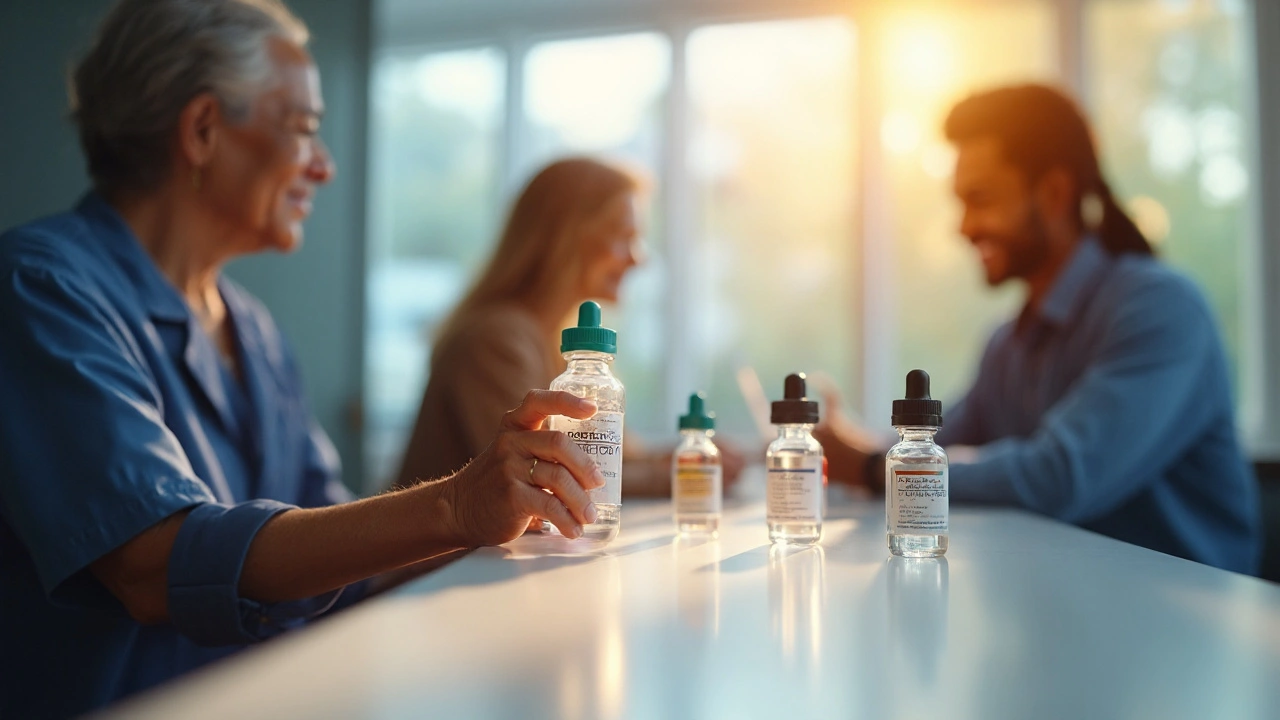
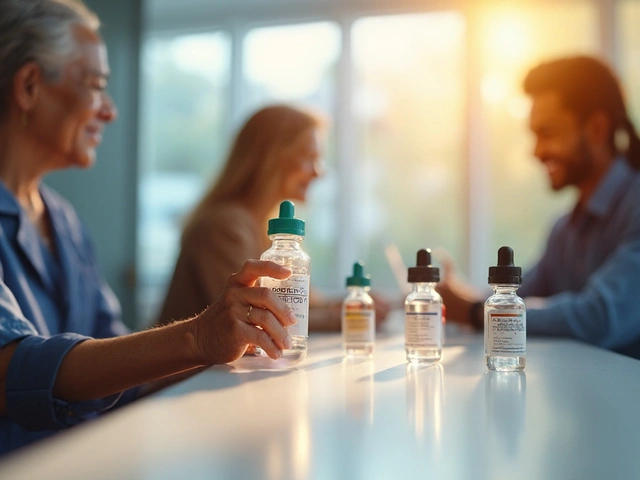
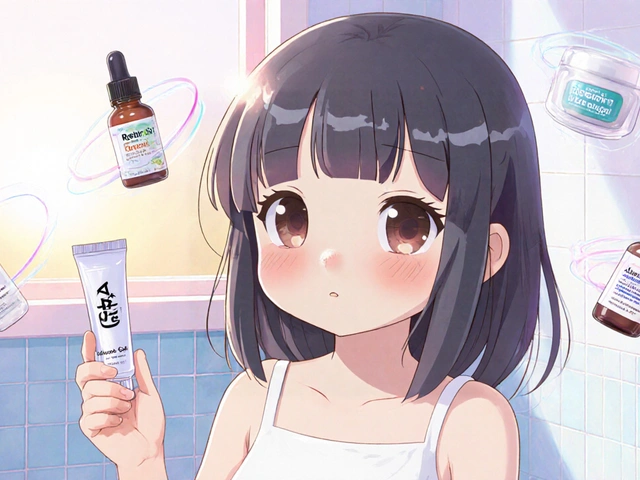
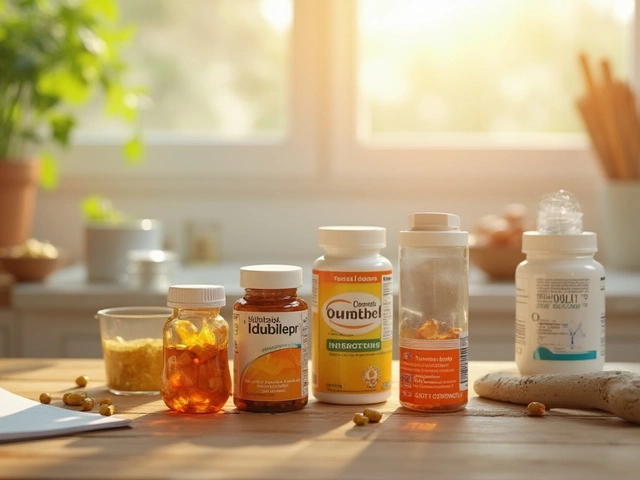
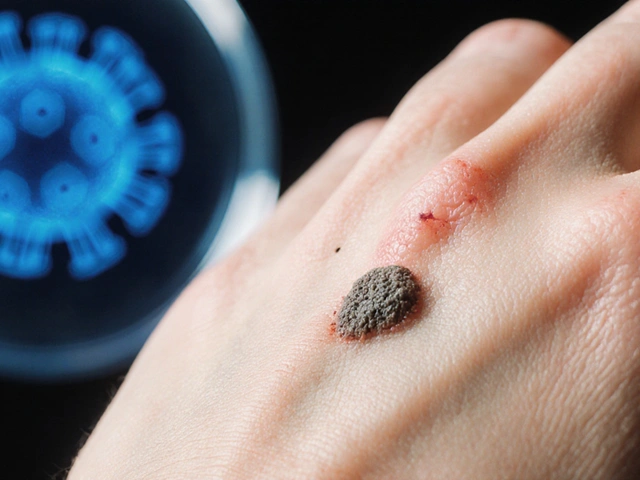
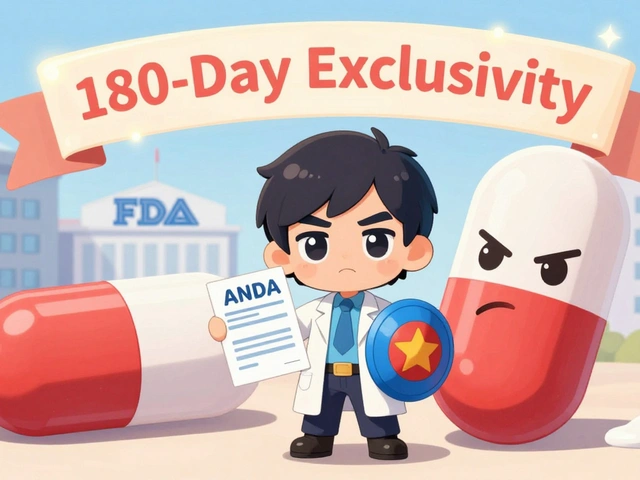
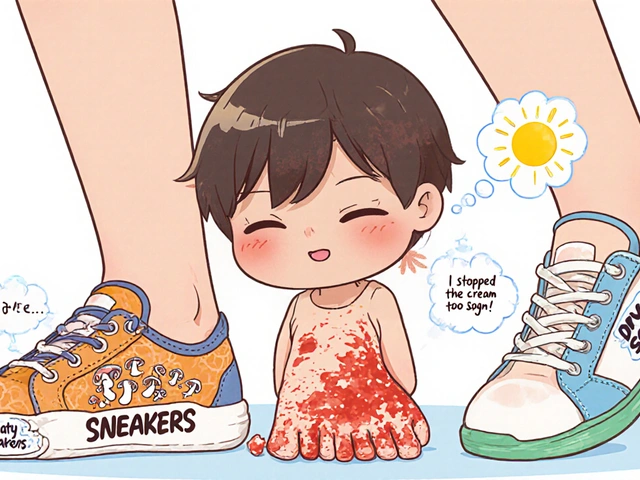
Melissa H.
September 25, 2025 AT 15:12When it comes to ocular inflammation, the first rule of thumb is to never let potency blind you to safety. Pred Forte packs a serious punch, but that punch can raise intra‑ocular pressure faster than you can say "glaucoma". I always start by checking baseline IOP, then schedule a follow‑up at one week and again at four weeks; skipping these appointments is a gamble you don't want to take. If the patient is a known steroid responder, consider swapping to loteprednol etabonate right away – it’s a softer steroid that the eye metabolizes quickly, keeping pressure spikes to a minimum. Even in patients without a glaucoma history, a sudden IOP rise can sneak in after a couple of weeks, so keep an eye on symptoms like blurred vision or halos around lights. Remember that diabetes adds another layer of risk; hyperglycemia can worsen steroid‑induced pressure changes, so tighter glucose control is a must. For pregnant or nursing mothers, the placental transfer is minimal, yet many clinicians still opt for a milder agent out of an abundance of caution. Children under six are especially vulnerable to cataract formation, so avoid prednisolone in that group unless absolutely necessary. Contact lens wearers should remove lenses before each drop and wait at least fifteen minutes before reinserting – steroid residues can act as a nidus for microbial growth. Storage matters too: once opened, Pred Forte should be refrigerated and discarded after thirty days to prevent contamination. If you notice any visual disturbance, don’t wait for the next scheduled check; schedule an urgent IOP measurement. In practice, I taper the drops rapidly once inflammation subsides – a steep taper can cause rebound inflammation, while a slow taper risks prolonged pressure elevation. Ultimately, the decision tree balances severity, risk profile, and duration of therapy; no single drop fits all scenarios. Keep the monitoring checklist handy, stay vigilant, and you’ll harness Pred Forte’s power without succumbing to its pitfalls. 😊
Edmond Abdou
September 26, 2025 AT 07:52Great points on monitoring! 👍 Keeping a close eye on IOP really saves patients from unexpected complications. It’s also helpful to educate them on the signs of pressure spikes so they can act quickly.
Sydnie Baker
September 27, 2025 AT 00:32One must acknowledge the pharmacodynamic superiority of prednisolone acetate over its hydrocortisone counterpart; the former's fourfold potency justifies its clinical primacy in acute uveitic flares. Yet, the lexical precision in prescribing necessitates an awareness of its iatrogenic IOP elevation risk, a nuance often obfuscated in lay discourse.
Benjie Gillam
September 27, 2025 AT 17:12i see the point but also think about the holistic view. the eye is more than a target organ, its a gateway to the brain, so any drug that messes with pressure could impact cognition in the long run. it is like a balance beam, you cant just dump heavylifting steroids without a safety net.
Naresh Sehgal
September 28, 2025 AT 09:52LISTEN UP! IF YOU'RE DEALING WITH SEVERE INFLAMMATION, DON'T HESITATE – PRED FORTÉ IS YOUR GO‑TO, BUT KEEP THAT IOP CHECK LIST AT THE READY. FOR HIGH‑RISK PATIENTS, SWITCH QUICKLY TO LOTEPREDNOL OR FLUOROMETHOLONE. MOVE FAST, MONITOR CLOSELY, AND TAPER BEFORE THE PRESSURE SKYROCKETS.
Poppy Johnston
September 29, 2025 AT 02:32Totally agree, Naresh. I’ve seen the difference when we switch to a softer steroid early – patients stay chill and their pressure stays stable.
Johnny VonGriz
September 29, 2025 AT 19:12From a teamwork perspective, it helps to have a clear protocol: start with potency based on severity, then adjust for risk factors. I always document the IOP values in the chart so we don’t lose track.
Real Strategy PR
September 30, 2025 AT 11:52Switching early is smart.
Doug Clayton
October 1, 2025 AT 04:32It’s good to have those checklists in place. Patients feel more reassured when they know what to expect and when you’ll check their pressure again.
Michelle Zhao
October 1, 2025 AT 21:12Whilst the discourse herein is commendably thorough, one must not overlook the theatricality of the clinical setting. The clinician, cloaked in scrubs, must orchestrate a symphony of pharmacologic agents, lest the patient’s ocular milieu descend into chaos.
Eric Parsons
October 2, 2025 AT 13:52Indeed, the balance of efficacy and safety is a delicate art. When severity mandates a high‑potency steroid, the practitioner should simultaneously institute a rigorous monitoring schedule to preempt adverse pressure responses.
Mary Magdalen
October 3, 2025 AT 06:32Patriotic doctors know that our nation’s vision health is under threat if we over‑prescribe steroids. Stand firm, use the softer options when possible, and protect our citizens from needless glaucoma.
Dhakad rahul
October 3, 2025 AT 23:12Wow, such passion! 😎 Still, the data supports a measured approach – high‑potency steroids when truly needed, but always with a backup plan.
William Dizon
October 4, 2025 AT 15:52Hey folks, just wanted to add that patient education is key. Explain why we’re checking pressure and what symptoms to look out for – it builds trust.
Jenae Bauer
October 5, 2025 AT 08:32Sure, education is fine, but have you considered that the pharmaceutical industry might be hiding long‑term effects? I’ve seen studies that never get published.
vijay sainath
October 6, 2025 AT 01:12Look, the numbers prove that steroids are the main cause of pressure spikes. If you want to keep your patients safe, limit steroids and stick to NSAIDs whenever you can.
Daisy canales
October 6, 2025 AT 17:52Oh great, another steroid fanboy. Yeah, sure, just ignore the whole IOP thing and keep slapping steroids on everything.
Olivia Christensen
October 7, 2025 AT 10:32Thanks for the thorough breakdown! 😊 It really helps to see a step‑by‑step guide when deciding between steroids and NSAIDs. I’ll definitely share this with my mom-she’s a contact‑lens wearer and worried about pressure.
Lauren W
October 8, 2025 AT 03:12While the exposition is commendably exhaustive, one must question the tacit endorsement of any pharmacologic agent without an exhaustive meta‑analysis of longitudinal data; such omissions, albeit subtle, betray an underlying bias.